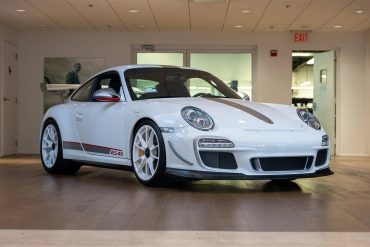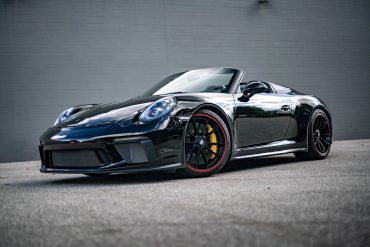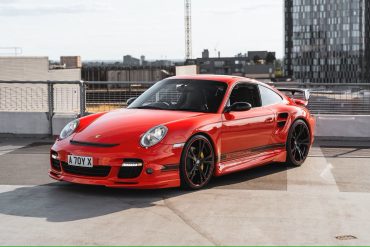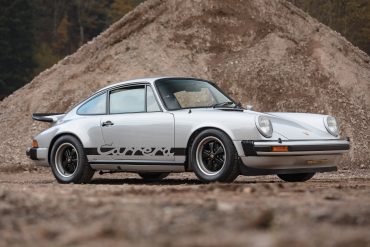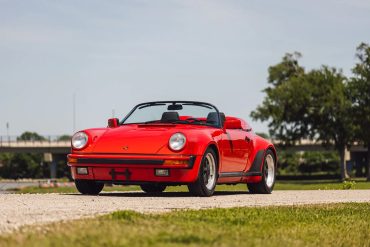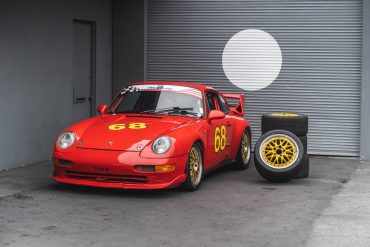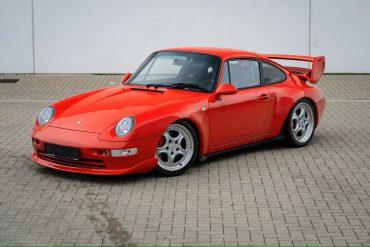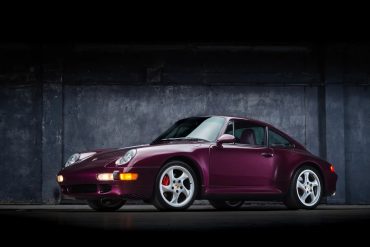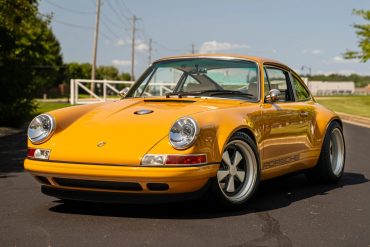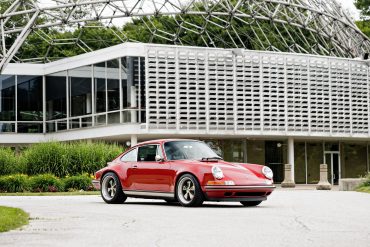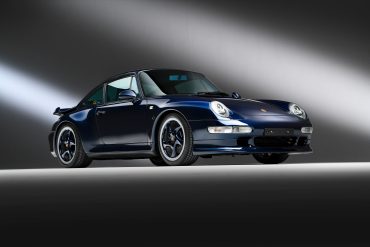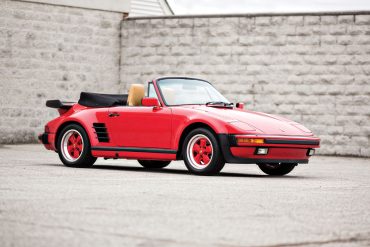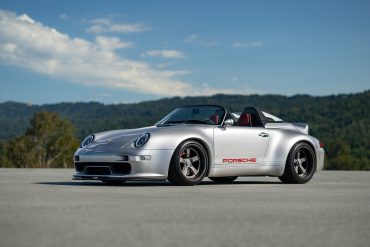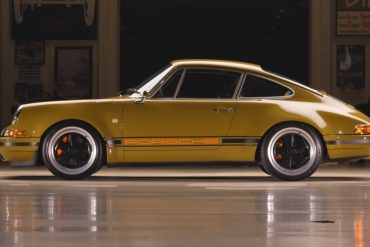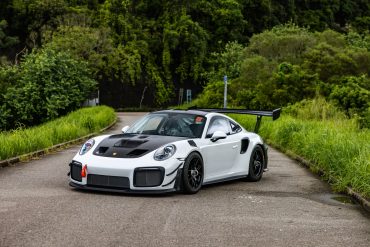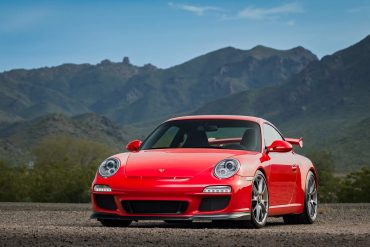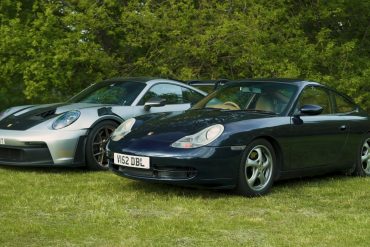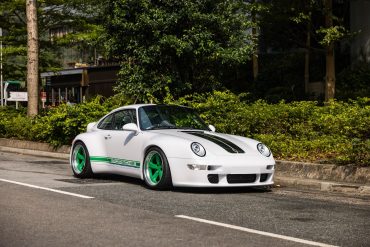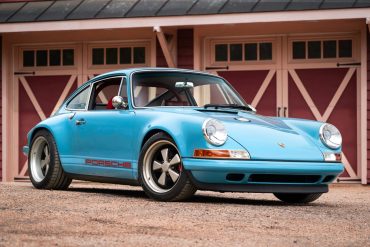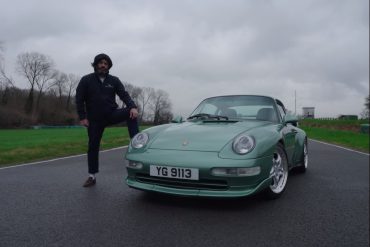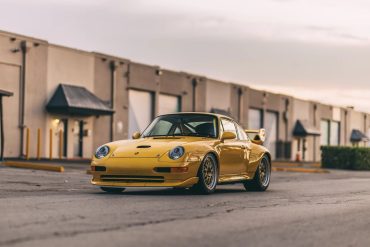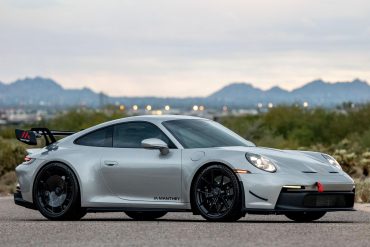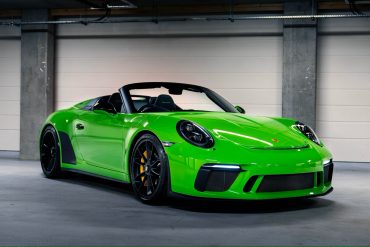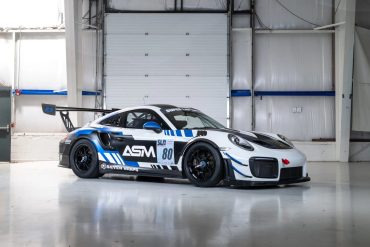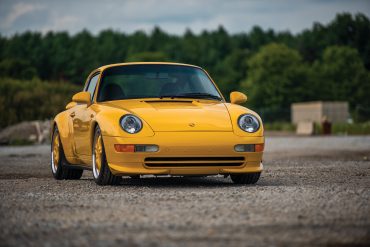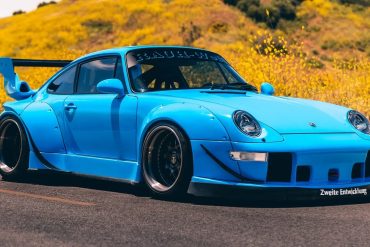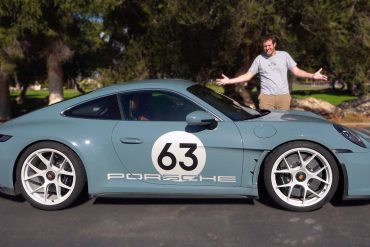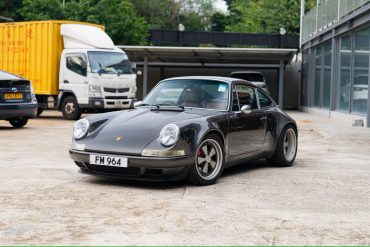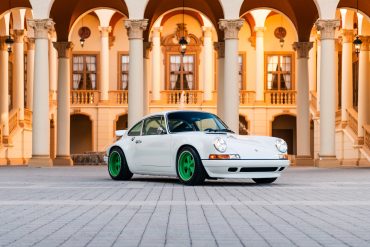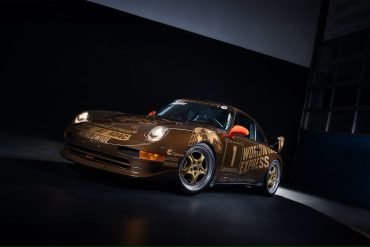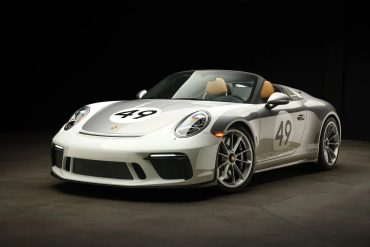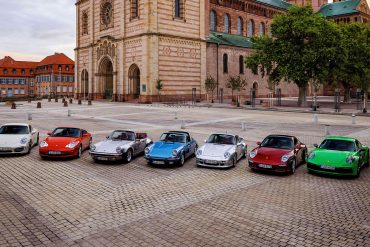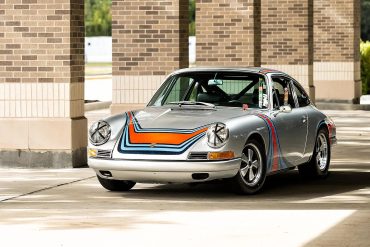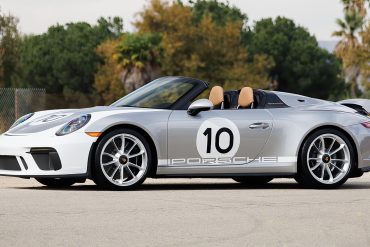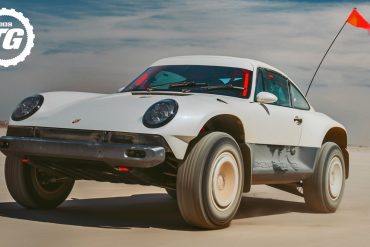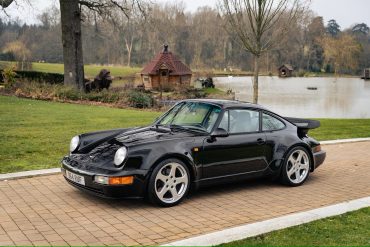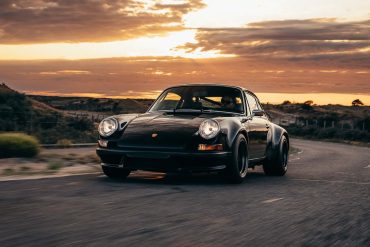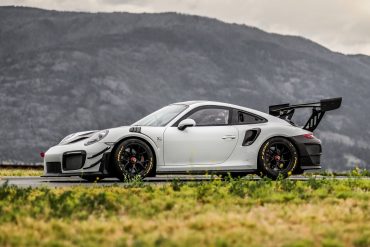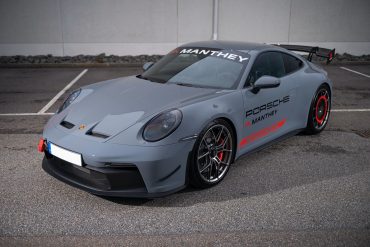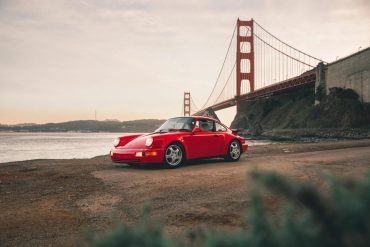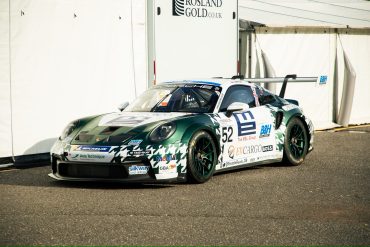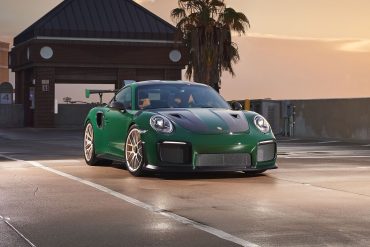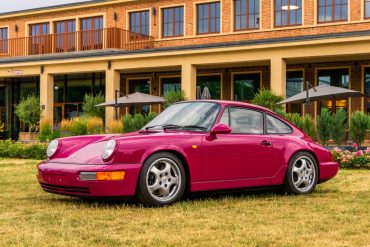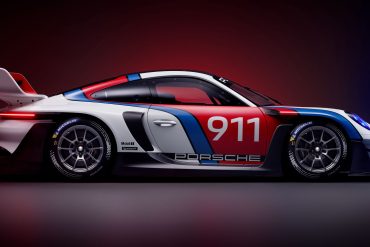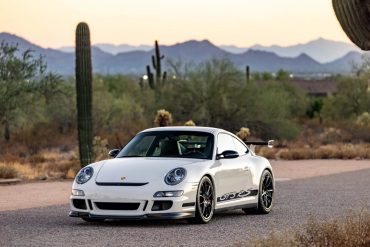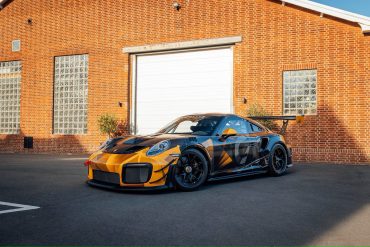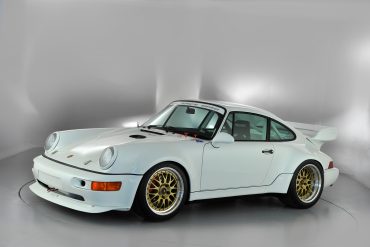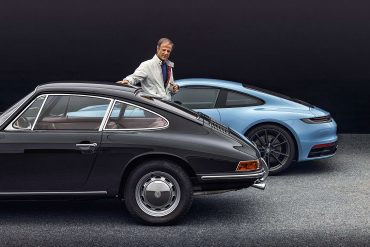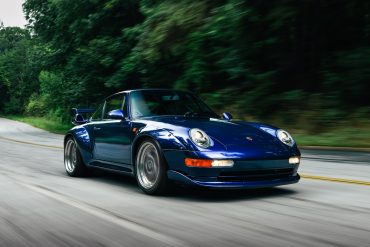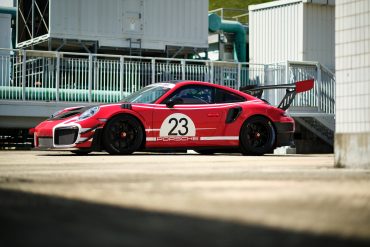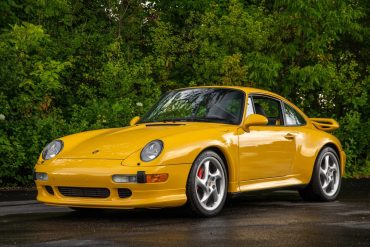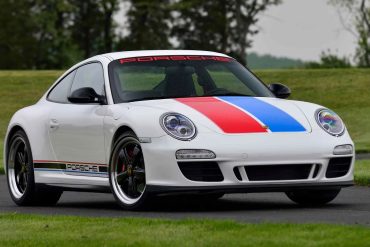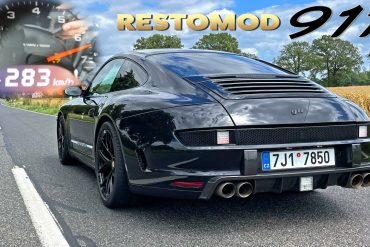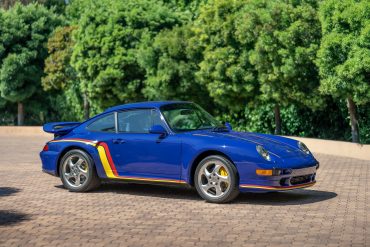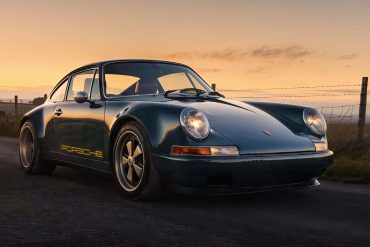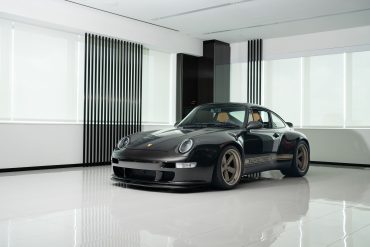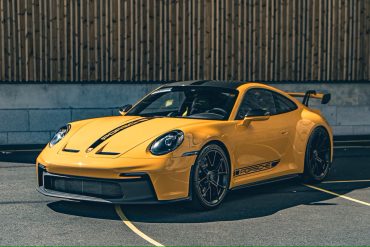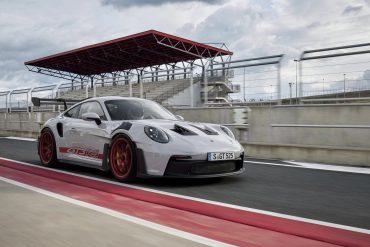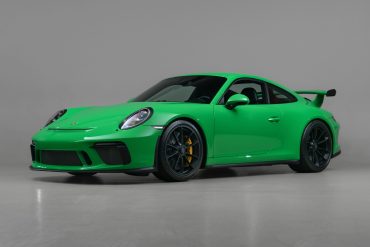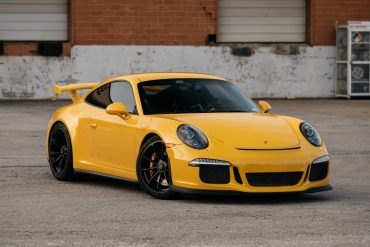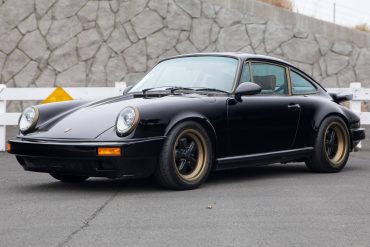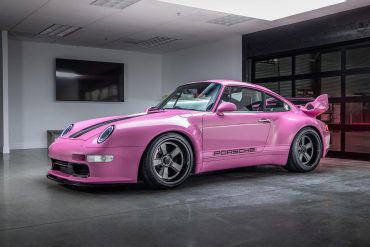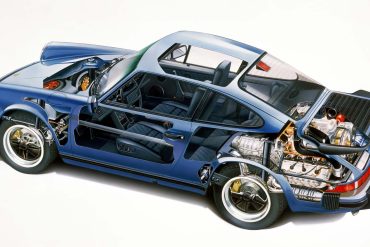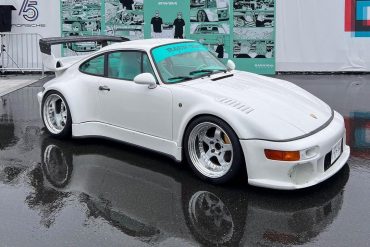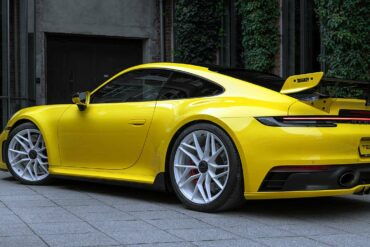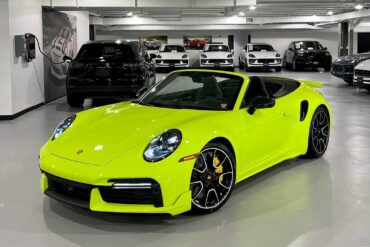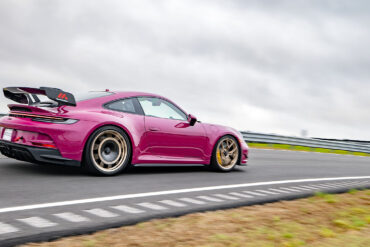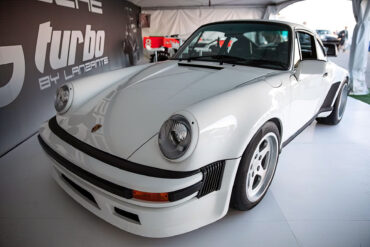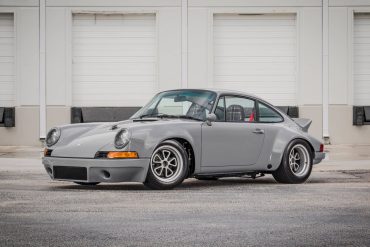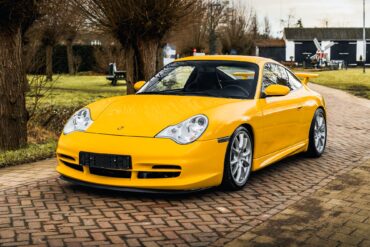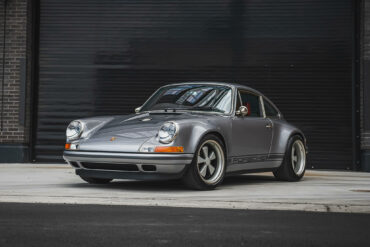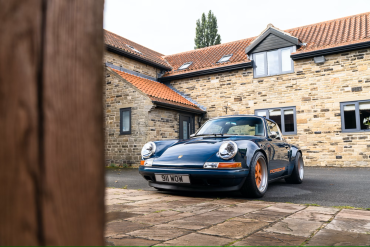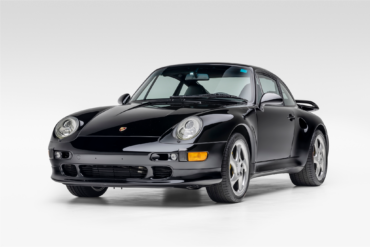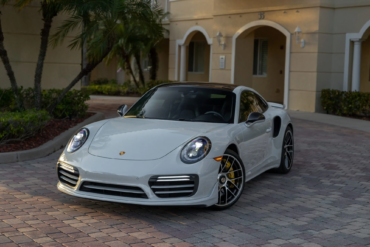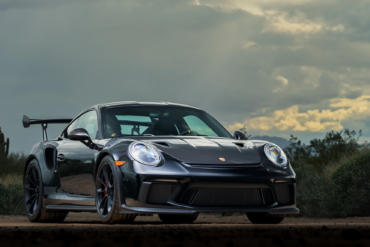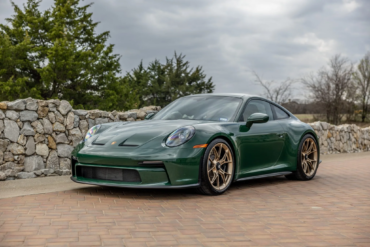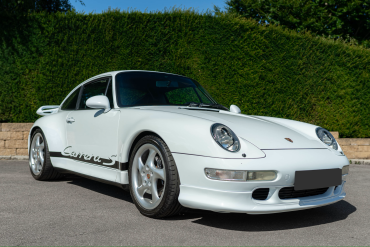Founded in Los Angeles in 2009 by Rob Dickinson, a former musician and 911 enthusiast, Singer set out to create...
225 results for
911 research hub
This 2011 Porsche 911 GT3 RS 4.0, listed for sale on Bring a Trailer, is one of just 600 examples...
The new Porsche 911 GT3 Cup is the first race car based on the current 911 model series 992. Like...
The 2019 Porsche 911 Speedster represents the final—and by many accounts, the finest—version of the highly regarded 991 generation, limited...
The sixth generation of Porsche’s iconic 911, known as the 997, debuted in 2005. While it kept the familiar shape...
From 1974 to 1976, Porsche introduced a limited number of high-performance lightweight Carreras, exclusively for the European market. Known as...
The Speedster, introduced in 1989, completed Porsche’s soft-top 911 lineup by reviving a charismatic model from the brand’s past. The...
This rare Porsche 911 Type 964 variant, the Carrera RS 3.8 which is currently offered for sale on Bring A...
Singer Vehicle Design, established in Los Angeles in 2009, has gained worldwide acclaim for its masterful restorations of air-cooled Porsche...
The 993 generation gave us some great Porsches. You had the 993 Turbo which was a straight line weapon and...
The 993 generation gave us some great Porsches. You had the 993 Turbo which was a straight line weapon and...
The 993 Carrera 4S, available from 1995 to 1998 as a 1996 model year onward, was a unique addition to the Porsche...
The 2019 Porsche 911 Speedster represents the final and, arguably, the finest version of the 991 generation, limited to just...
Merit Partners is proud to offer the 1989 Porsche 911 Singer Phoenix Commission with 3,370 miles on the odometer. Founded...
Singer Vehicle Design, based in Los Angeles, was established in 2009 by Rob Dickinson, former lead singer of Catherine Wheel....
This Porsche 911 reimagined by Singer, known as The “Denmark Commission,” showcases a stunning and meticulously crafted design. Finished in Rome...
The Type 993 is frequently regarded as the most stunning 911 ever created. Its range included familiar variations such as...
One of the rarest Porsche 930 models was the hand-built 505-option ‘Flachbau’ or slant nose. This special-order Porsche package was...
The 993-generation Porsche 911 may have marked the end of the air-cooled era, but it also ignited a booming market...
Restomodding Porsches has surged in popularity over the last couple of years, thanks to companies like Singer Vehicle Design, Gunther...
Well, that didn’t take long. In February, Singer Vehicle Design celebrated its 300th restoration work, a Porsche 911 reimagined by...
Singer Vehicle Design, based in California, is known for its meticulous restoration of air-cooled Porsche 911s, particularly those of the...
The 991, introduced in 2011, marked a significant evolution of the iconic 911. It was wider and longer than its...
Singer’s latest creation celebrates the iconic Porsche 911 by turbocharging it and basing it on the 930 Turbo from the...
The 2019 model year concluded the seventh-generation 911 production. To celebrate this milestone, Porsche introduced the GT2 RS Clubsport as...
The GT3’s essence has always been that of a race car with just enough equipment to be street legal. For...
The Porsche 911 GT2, primarily built for racing but still road-legal, has a lineage tracing back to the iconic 1973...
Unveiled in 2019, the Porsche 991 Speedster was the final edition of the 991 generation, built to celebrate 70 years...
In 1995, Porsche adapted to the evolving landscape of international GT racing with a series of homologation specials, starting with...
This AutoTopNL video on YouTube showcases the incredible speed and sound of a unique Porsche 911 restomod built by CSF...
The GT3 RSR, based on the Type 997, featured the latest version of the classic flat-six engine. In 2009, it...
In 1993, Porsche introduced the Type 993, considered by many as the most beautiful 911. After years of aerodynamic and...
The Porsche 911 is a legendary car, revered for its timeless design, exceptional performance, and exhilarating driving experience. It also...
Earlier this morning, Porsche unveiled the first models of the new Type 992.2 911, the Carrera Cabriolet and Coupe, and...
The 2019 model year marked the end of seventh-generation 911 production. To commemorate this, Porsche introduced the GT2 RS Clubsport...
In 1993, Porsche introduced the Type 993, widely regarded as the most user-friendly and elegantly designed 911. Over the years,...
Gunther Werks, established in 2017 by the team behind Vorsteiner, took the iconic air-cooled Porsche 993 and crafted a modern...
Rob Dickinson, founder of Singer Vehicle Design, has transformed his childhood obsession with Porsche 911s into a company crafting automotive...
Tuthill Porsche has earned acclaim in the rally world, transforming road cars into formidable rally beasts. Notably, they collaborated with...
The demise of the FIA World Sportscar Championship in 1992 left a void in international GT racing, but the emergence...
The 992 GT3 becomes the seventh iteration of one of Porsche’s most established and beloved automobiles and it continues to...
Those who are of the traditional, air-cooled Porsche camp, turn away now, because there is nothing you’re going to like...
Celebrating their 70th anniversary, Porsche unveiled the Type 991.2 Speedster concept at the 2018 Paris Motor Show, marking a significant...
Unveiled alongside the 992-generation 911 at the 2018 Los Angeles Auto Show, the 911 GT2 RS Clubsport marked the culmination...
The 993 generation gave us some great Porsches. You had the 993 Turbo which was a straight line weapon and...
This 993-generation Porsche 911 coupe was modified by renowned Porsche tuner Akira Nakai, who fitted it with a 17-piece RWB...
Many consider the 2024 Porsche 911 S/T as the ultimate Porsche 911 as it combines the best features from various...
Theon Design is rapidly establishing itself as a prominent figure in the realm of 911 restomods, specializing in the 964-generation...
Established in Los Angeles in 2009, Singer Vehicle Design is a prominent figure in reimagining Porsche 911s from the 964-generation...
Based on the 993 Carrera 2 coupe, the 993 Cup 3.8 was developed at Porsche’s competition department to replace the...
As part of the company’s 70th-anniversary celebrations, Porsche unveiled the 991 Speedster at the New York Auto Show in April...
Hambach Castle is one of the many highlights of this year’s Porsche Heritage Experience cultural format organized by the Porsche...
Introduced in 1966 to enhance the performance capabilities of the already successful 911, the 911 S boasted a more powerful...
The original light-weight The Speedster variant of the 356 was introduced in 1954, featuring a low-raked windscreen, bucket seats, and...
The Singer All-terrain Competition Study, or ACS for short is a reimagined 964 911 developed through a collaboration between Singer...
This Porsche RUF 911 RCT, from the 964 era, serves as the origin of the RUF RCT model and was...
This 1988 Porsche 911 Turbo underwent a custom Carrera RSR-style restoration with backdated bodywork including a classic long-hood nose section,...
The 911 GT2 RS Clubsport made its debut alongside the new 992-generation 911 at the 2018 Los Angeles Auto Show,...
Vintage Porsche 911s have garnered immense popularity in the restoration world, giving rise to businesses entirely dedicated to their reconstruction....
This 2023 Porsche 911 GT3 has been enhanced with the coveted Manthey Performance Kit, courtesy of Porsche Centre Gothenburg. It...
Theon Design is swiftly establishing itself as one of the prominent names in the realm of 911 restomods, specializing in...
The Turbo S2 is a homologation special that Porsche commissioned to comply with IMSA requirements for participating in the Bridgestone...
The Cup car, styled in a spectacular manner, stands as the first racing car based on the current 992 generation...
For those drivers still seeking a 911 to give them exhilarating driving experience, the 991 GT2 RS stands out. This...
In the early 1990s, Porsche focused on showcasing its new 964 Carreras globally in racing. The company developed track-ready versions...
The 911 GT3 R Rennsport, with a power output of up to 456 kW (620 PS) is based on the...
The 996-generation GT3 RS wasn’t available in the U.S., but that changed with the 997-generation. The standard 997 GT3 made...
Debuting alongside the 992-generation 911 at the 2018 Los Angeles Auto Show, the 911 GT2 RS Clubsport represented the pinnacle...
Every so often, Porsche creates a short production run of cars that celebrates the attributes of one of their special...
Evolution, not Revolution Since its debut in 1964, the Porsche 911 has epitomized engineering evolution. Conceived by Ferdinand “Butzi” Porsche,...
If you want the ultimate version of the air-cooled 911, then you should get this 1996 Porsche 911 GT2 currently...
Introduced alongside the 992-generation 911 at the 2018 Los Angeles Auto Show, the 911 GT2 RS Clubsport marked the culmination...
The 993 Carrera 4S, available from 1995 to 1998 as a 1996 model year onward, was a unique addition to...
Porsche and Brumos Racing have once again delved into their shared history to craft an exceptional Porsche 911 Carrera GTS...
Earlier this month, Edit Automotive has unveiled its vision of the Porsche 911 named the g11, an intricately crafted sports car predicated on...
In 1997, Porsche introduced the 993 Turbo S, a limited-production model that served as a magnificent farewell to the era...
The esteemed UK firm, Theon Design, known for their custom reconfigurations of the iconic Porsche 911, has recently unveiled a...
The 993-generation 1997 Porsche 911 Remastered by Gunther Werks stands as a sports car that continues to captivate even more...
A beautiful and low mileage example of a 2022 Porsche 911 GT3 Clubsport is currently available for auction on Collecting...
News dropped today that Porsche’s iconic 911 model series will be the only cars to come from Stuttgart after 2030....
The 991.2 generation of Porsche’s 911 GT3 marked a significant improvement over its predecessor, incorporating several desirable changes. Responding to...
Porsche introduced the 991 GT3 for the 2014 model year, as follow up to the multiple 997 GT3 variants. The...
This 1978 Porsche 911 Outlaw showcases a high-quality custom finish and a powerful 993 3.6L engine, delivering both visual excitement...
Gunther Werks, a California-based Porsche specialist, has unveiled an awe-inspiring restomod of the Porsche 911 (993) at the esteemed Goodwood...
History Long regarded as the best entry-level air-cooled 911, the Carrera 3.2 remains highly desirable. It was the final evolution...
Akira Nakai and Daniel Arsham are renowned figures in the realm of automotive artistry, especially when it comes to Porsche...
Clubsport upgrades Our friends at TechArt have just introduced a new line of equipment suitable for both track and street...
The 2022 Porsche 911 Turbo S Cabriolet is a formidable beast. The new Turbo S comes with an all-new, 3.8...
First-hand testing at Porsche Experience Centers Owners of the Type-992 911 GT3 in the United States have, for the first...
The 7-figure 911 will solve all of life’s problems Many of us, including myself, continue to watch in disbelief as...
This 1970 Porsche 911 is a one-of-a-kind creation commissioned by Orbit Racing for a complete RSR/outlaw-style restoration, resulting in an...
Featured here is a a supercharged 996-generation 911, built by famed Porsche tuner RUF. The R Kompressor is based on...
Singer Vehicle Design built the “Greenwich Commission” between 2017 and 2019 as their 109th project. This customized 911 is based...
This remarkable 911 is a bespoke sports car, crafted by Singer Vehicle Design, and is one of the few Targa...
In 1997, Porsche produced a limited factory-production run of what is the last air-cooled 911 Turbo, the 993 Turbo S....
Bring A Trailer is currently offering a low mileage example of a 2019 Porsche 911 Turbo S Coupe finished in...
Bring A Trailer is currently offering a low mileage and eye-catching example of Porsche’s 991.2 generation track-focused supercar that also...
Live on Bring A Trailer is a 2022 Porsche 911 GT3 Touring is finished in paint-to-sample British Racing Green with only...
This was the first 911 Targa to came out of the Singer factory. It is a magnificent piece of machine...
Collecting Cars is currently offering a well-maintained and highly original 1997 Porsche 911 (993) Carrera S. This example is finished...



